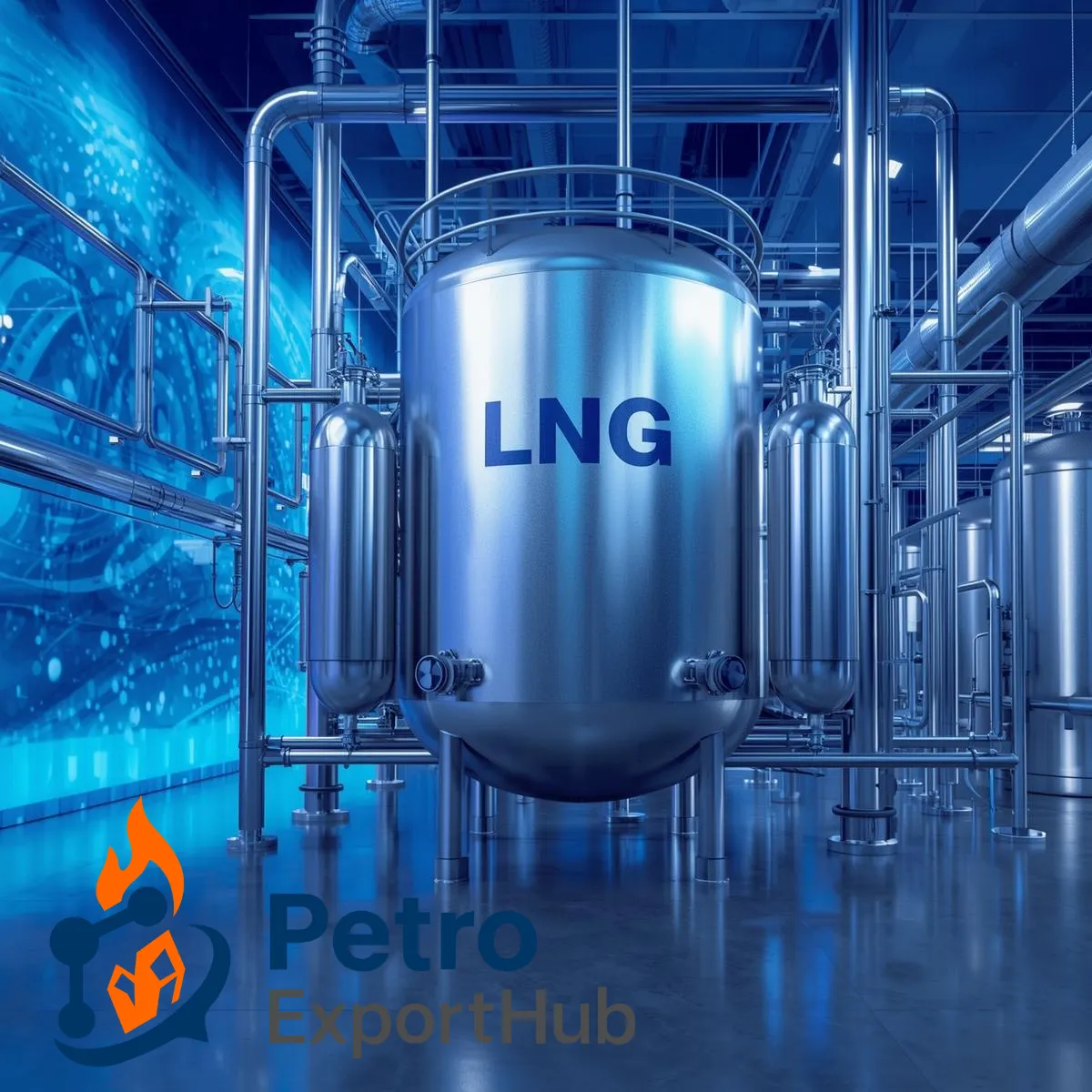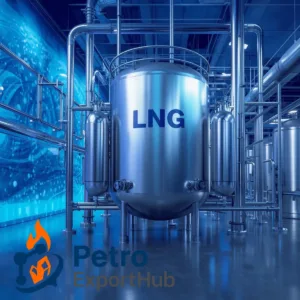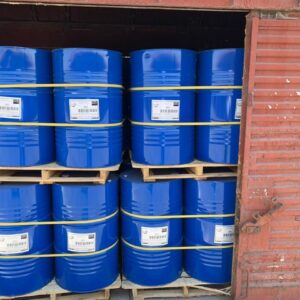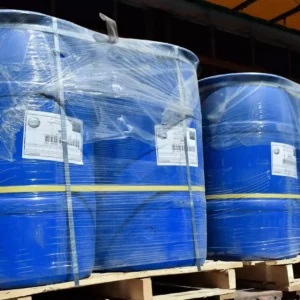Description
Key Insights on LNG
- Definition and Production: Liquefied Natural Gas (LNG) is natural gas cooled to about -162°C, shrinking its volume by 600 times for efficient transport; the liquefaction process involves removing impurities and using refrigeration cycles to achieve this state.
- Core Properties: LNG offers high energy density (around 22 MJ/L, comparable to diesel), enhanced safety as a non-toxic liquid that doesn’t ignite easily, and superior transportation advantages for long-distance shipping via specialized tankers.
- Major Applications: It powers electricity generation (reducing emissions by up to 50% vs. coal), serves as clean industrial fuel, fuels low-emission shipping, and supports residential heating and commercial operations.
- Market Trends: Global LNG demand is projected to grow 60% by 2040, led by Asia’s imports (over 50% of growth); Europe stabilizes post-2025, while the Middle East emerges as a key producer; market size hits $132 billion in 2025 with 8.5% CAGR to 2032.
- Iran’s Export Potential: Iran’s vast reserves position it for LNG supplies to neighbors like Turkey (via existing pipelines expandable to LNG), UAE/GCC for energy security, CIS/Africa/South Asia amid rising demand, though sanctions pose challenges.
- Future Role: LNG bridges to renewables as a flexible, lower-carbon fuel, with supply expansions ensuring affordability through 2030.
What is LNG?
LNG, or Liquefied Natural Gas, transforms gaseous methane into a liquid for easier handling. Primarily composed of methane (over 90%), it’s produced by cooling natural gas to cryogenic temperatures, enabling global trade without pipelines.
Production Process
The journey starts with natural gas extraction, followed by pretreatment to strip out water, CO2, and mercury. Liquefaction then occurs in plants using multi-stage refrigeration—often propane or mixed refrigerants—to reach -162°C, condensing the gas into a clear, odorless liquid.
Benefits for Global Buyers
For importers in Asia and Europe, LNG means reliable supply diversification, cutting reliance on volatile oil markets while supporting decarbonization goals.
Liquefied Natural Gas (LNG): Revolutionizing Global Energy Trade and Sustainability
In an era where energy security and environmental responsibility intersect, Liquefied Natural Gas (LNG) emerges as a pivotal player in the international petrochemical landscape. As nations grapple with transitioning from coal and oil, LNG offers a cleaner, more flexible alternative that powers economies without compromising growth. This article delves into the essence of LNG gas, its production, properties, applications, and market dynamics, with a special focus on export opportunities like Iran LNG supply to high-demand regions. Whether you’re a procurement manager eyeing LNG export to Asia or an industrial buyer exploring LNG for power generation, understanding this versatile resource is key to strategic decision-making.
Introduction to LNG: From Gas to Global Commodity
Liquefied Natural Gas (LNG) is essentially natural gas—predominantly methane (CH4)—that has been cooled to its boiling point of approximately -162°C (-260°F) at atmospheric pressure. This cryogenic process transforms the gas into a liquid, reducing its volume by about 600 times compared to its gaseous state. The result? A compact, efficient form ideal for storage and overseas transport, making LNG a cornerstone of modern energy trade.
The production of LNG begins upstream with the extraction of natural gas from reservoirs, often co-produced with oil. Raw gas undergoes rigorous pretreatment to remove impurities: water vapor is extracted via glycol dehydration to prevent ice formation during cooling, carbon dioxide and hydrogen sulfide are scrubbed using amine solutions, and mercury is adsorbed onto sulfur-impregnated activated carbon. These steps ensure the gas meets stringent purity standards, typically 99% methane content, vital for safe liquefaction.
At the heart of LNG production lies the liquefaction process, a marvel of engineering conducted in specialized facilities known as LNG trains. Here, the pretreated gas enters heat exchangers where it’s progressively cooled using refrigeration cycles. The most common method, the propane pre-cooled mixed refrigerant (C3MR) process, employs propane compressors to chill the gas initially, followed by a mixed refrigerant loop (nitrogen, methane, ethane, and propane) that achieves the final cryogenic temperatures. Emerging technologies, like the optimized cascade or nitrogen expander cycles, enhance efficiency, reducing energy use by up to 30%. Once liquefied, LNG is stored in insulated tanks at -162°C before loading onto specialized carriers.
This process not only enables LNG to traverse oceans but also positions it as a bridge fuel in the global shift toward net-zero emissions. For buyers seeking reliable LNG for power generation, the scalability of these plants—from mega-facilities in Qatar to modular small-scale units—offers tailored supply solutions.
Key Properties of LNG: Efficiency, Safety, and Transport Superiority
LNG’s appeal in B2B trade stems from its remarkable physical and chemical properties, which balance high performance with inherent safety. At its core, LNG boasts an impressive energy density of approximately 22 megajoules per liter (MJ/L), roughly three times that of compressed natural gas (CNG) and on par with diesel fuel. This volumetric efficiency means a single LNG tanker can deliver the energy equivalent of several million cubic meters of pipeline gas, slashing logistics costs for long-haul imports.
Safety is another hallmark, making LNG a preferred choice for risk-averse buyers. As a non-toxic, non-corrosive liquid, LNG leaves no residue upon evaporation and cannot ignite in its liquid form—it must vaporize and mix with air at a precise 5-15% concentration to become flammable. Its boiling point ensures it remains stable under normal conditions, and in the event of a spill, it rapidly evaporates without pooling like oil. Regulatory bodies like the U.S. Department of Transportation classify LNG as one of the safest transport fuels, with incident rates far below those of gasoline or propane.
Transportation benefits further amplify LNG’s value proposition. Unlike pipeline-dependent natural gas, LNG’s liquid state allows seamless maritime shipping via double-hulled, membrane-type carriers insulated with perlite or polyurethane foam. These vessels, capable of carrying 150,000-266,000 cubic meters, enable flexible routing to ports worldwide, reducing delivery times and geopolitical vulnerabilities. For regions like South Asia, where infrastructure lags, LNG’s modularity supports truck or rail distribution from import terminals, fostering quicker market penetration.
In essence, these properties translate to tangible buyer advantages: lower capital outlays for storage, minimized downtime from supply disruptions, and a cleaner burn profile that aligns with ESG mandates.
| Property | Value | Buyer Benefit |
|---|---|---|
| Energy Density | ~22 MJ/L | Extended range for shipping and industrial use |
| Boiling Point | -162°C | Stable storage with minimal energy loss |
| Flammability Range (as vapor) | 5-15% in air | Enhanced safety over liquid fuels like gasoline |
| Volume Reduction | 1:600 vs. gas | Cost-effective bulk transport |
Diverse Applications: Powering Industries and Homes with LNG
LNG’s versatility extends across sectors, positioning it as a go-to fuel for diverse end-users. In power generation, LNG for power generation stands out, fueling combined-cycle turbines that achieve efficiencies up to 60%—far surpassing coal’s 33%. This application alone accounts for over 40% of global LNG demand, enabling utilities in import-heavy Asia to meet peaking loads while cutting CO2 emissions by 50% compared to traditional sources. Modular LNG-to-power solutions, like those in off-grid African projects, democratize electricity access.
As an industrial fuel, LNG powers manufacturing heavyweights such as steel, cement, and petrochemical plants. Its high calorific value (around 50 MJ/kg) ensures consistent heat for processes like cracking and reforming, while its low sulfur content complies with stringent emissions standards. In chemicals production, LNG serves as a feedstock for methanol and ammonia synthesis, supporting the green hydrogen economy.
The shipping sector is undergoing a LNG revolution, with over 300 vessels retrofitted as of 2025 for dual-fuel operations. LNG as marine fuel slashes NOx and SOx emissions by 90% and 100%, respectively, aligning with IMO 2050 targets. For trucking and rail, cryogenic tanks deliver energy-dense fuel for long-haul fleets, reducing refueling stops by 40% versus diesel.
Residential and commercial uses round out LNG’s portfolio, providing heating, cooking, and cooling in urbanizing markets. Peak-shaving plants vaporize stored LNG during winter surges, ensuring supply stability for millions in Europe and Japan. Small-scale LNG kits even enable off-grid communities in South Asia to transition from biomass, improving air quality and health outcomes.
For B2B buyers, these applications underscore LNG’s adaptability—whether scaling industrial output or fueling sustainable transport.
Global Market Insights: Trends, Demand, and Regional Dynamics
The LNG market in 2025 reflects resilience amid geopolitical shifts, with trade volumes reaching 411 million tonnes (MT) in 2024 and projected to grow 2-4% annually. Valued at $132 billion this year, the sector anticipates a robust 8.5% CAGR through 2032, driven by capacity additions totaling 200 MTpa between 2025 and 2030. Demand trends hinge on Asia’s voracious appetite, expected to claim 60% of global growth by 2040, fueled by economic expansion in China, India, and Southeast Asia. LNG export to Asia, particularly for baseload power and petrochemicals, will surge as coal phase-outs accelerate.
Europe, post-Ukraine crisis, stabilizes imports at 120 MT in 2025, prioritizing diversification from Russia via U.S. and Qatari supplies. The region’s focus shifts to biomethane blending and storage expansions, tempering growth to 1-2% annually. Meanwhile, the Middle East transitions from exporter to dual-role player, with production overtaking Asia’s in 2025 to become the world’s second-largest at over 1,000 bcm. Imports here rise modestly for domestic power, but export ambitions—led by Qatar’s 32 MTpa expansion—bolster global liquidity.
Future outlook points to a supply-rich era, with 350 bcm added by 2030, potentially easing prices to $8-10/MMBtu. Yet, challenges like U.S. export pauses and Asian solar booms introduce volatility. For importers, this means negotiating flexible contracts to hedge risks.
| Region | 2025 Import Share (%) | Key Drivers | Projected Growth (2025-2030) |
|---|---|---|---|
| Asia | 70+ | Industrialization, coal replacement | 4-5% CAGR |
| Europe | 25 | Energy security, renewables integration | 1-2% |
| Middle East | 5 | Domestic peaking, export hubs | 3% |
Export Opportunities: Iran’s LNG Supply to Emerging Markets
Iran, with the world’s second-largest gas reserves (over 33 trillion cubic meters), holds untapped potential in Iran LNG supply, despite sanctions curbing development. Current pipeline exports to Turkey—2.5 billion m³ in early 2025—demonstrate reliability, with contracts extendable to LNG for seasonal flexibility. As Turkey’s “major” supplier, Iran could scale to 10 bcm/year, supporting Ankara’s green transition.
In the GCC and UAE, proximity via the Persian Gulf enables spot LNG cargoes for peak summer cooling, complementing Qatar’s dominance. Iran’s Kish and North Pars fields could yield 20 MTpa by 2030, fostering joint ventures for energy security. CIS nations like Armenia and Azerbaijan seek diversification; Iran’s modular LNG tech could pipe-to-ship conversions, tapping 5-10 bcm demand.
Africa’s off-grid markets, from Egypt to Morocco, crave affordable LNG for power, where Iran’s cost-competitive supplies (under $6/MMBtu) align with AfDB initiatives. South Asia—India and Pakistan—presents the jackpot, with LNG export to Asia demand hitting 100 MT by 2030; Iran’s proximity slashes shipping costs by 20% versus Australian rivals.
Buyers stand to gain from long-term offtakes, blending Iranian LNG with renewables for hybrid models.
Conclusion: LNG as the Strategic Energy Anchor for Tomorrow
LNG gas isn’t just fuel—it’s a strategic enabler for sustainable prosperity. As global demand climbs and supplies diversify, LNG bridges fossil fuels to a low-carbon future, offering unmatched flexibility for power, industry, and transport. For forward-thinking buyers, securing LNG export to Asia or exploring Iran LNG supply unlocks resilient chains. Embrace LNG today to power tomorrow’s innovations.








Reviews
There are no reviews yet.